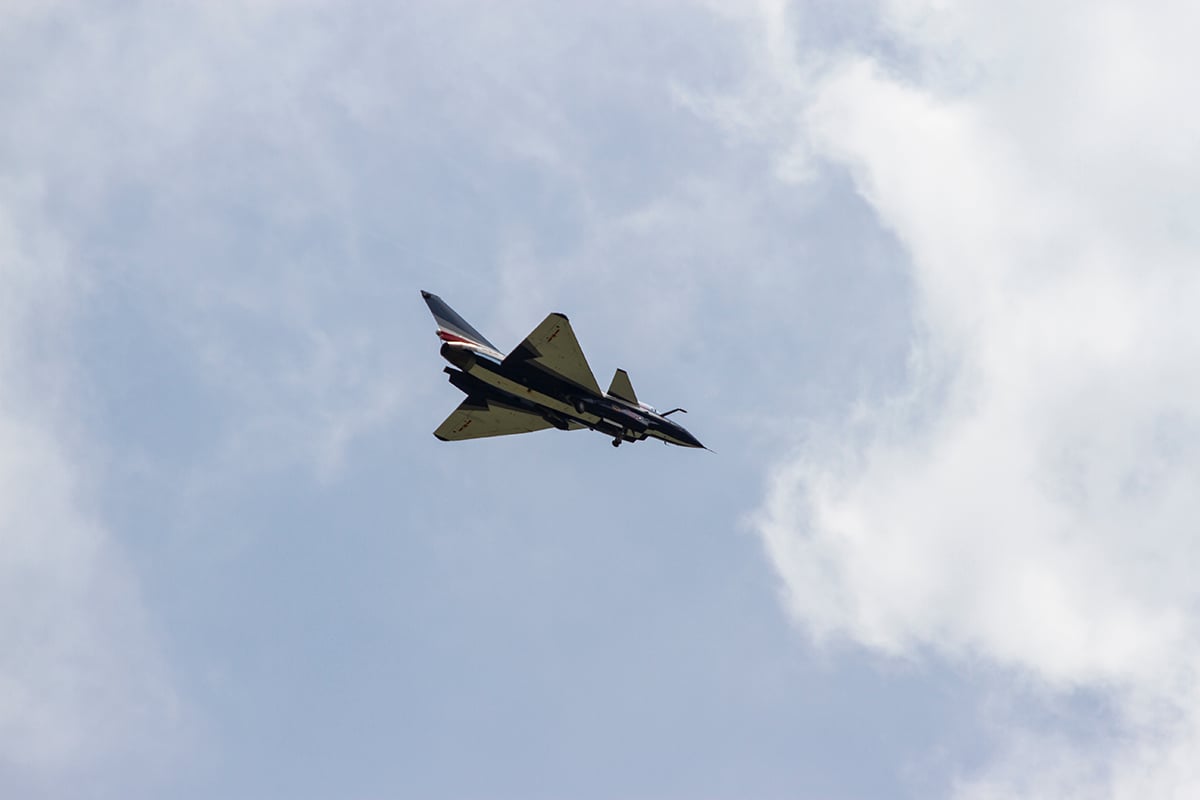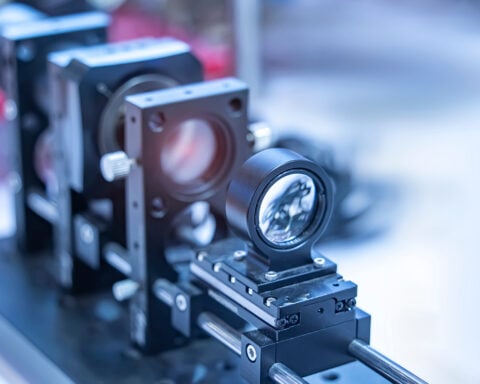In a groundbreaking demonstration of technological advancement, an artificial intelligence (AI)-guided fighter jet recently underwent a captivating dogfighting test against its human-controlled counterpart. This aerial duel, which took place in September 2023, has now been brought to light with the release of footage by DARPA’s Air Combat Evolution program.
The astonishing footage reveals a mesmerizing display of high-speed maneuvers as the two aircraft, one operated by a human pilot and the other autonomously guided by AI, engage in a series of dynamic combat maneuvers. Racing through the skies at an impressive speed of 1,931 kilometers per hour, both aircraft demonstrate remarkable agility and precision as they maneuver into close combat positions with remarkable finesse.
At the core of this technological feat lies the AI-guided aircraft, known as the X-62A or VISTA (Variable In-flight Simulator Test Aircraft). Developed through a collaborative effort between Lockheed Martin Skunk Works and Calspan Corporation, this state-of-the-art aircraft initially began as a simulator program intended for pilot training. However, it quickly transcended its virtual origins when, in December 2022, AI algorithms were entrusted with controlling a physical aircraft in real-world scenarios.
Since then, the AI-powered aircraft has accumulated numerous flight hours, both in real-world situations and simulated environments, refining its skills and capabilities for its primary objective: engaging in within-visual-range combat scenarios, commonly known as “dogfighting.”
The significance of this technological leap is profound, with the potential to revolutionize air combat. Colonel James Valpiani, the commandant of the Air Force Test Pilot School, highlights the promise of machine learning in the challenging realm of air-to-air combat, where split-second decisions can determine success or failure.
Further illustrating the program’s advancements is the recent flight of US Secretary of the Air Force Frank Kendall aboard the AI-guided X-62A jet on May 2, 2024. Kendall’s participation underscores the strategic importance of integrating AI into military operations, emphasizing the necessity of embracing such technology for national security purposes.
Undeniably, the emergence of AI-assisted weaponry offers the tantalizing prospect of increased accuracy, potentially reducing collateral damage, civilian casualties, and the risk of friendly fire incidents. However, this technological frontier also raises significant ethical, legal, and security concerns.
Chief among these concerns is the issue of accountability and oversight. As AI systems assume more autonomous roles in decision-making processes, there is a daunting prospect of delegating life-and-death judgments to algorithms with minimal human intervention. Critics caution against the hazards of uncontrolled AI proliferation, highlighting the ethical dilemmas posed by the deployment of what effectively amount to “killer robots.”
In response to these apprehensions, there have been growing calls for rigorous regulation of militarized AI. Advocates argue that robust oversight mechanisms are essential to mitigate the potential risks associated with unrestricted AI development.
Yet, amidst these deliberations, the specter of an AI arms race looms large. With nations competing to gain an advantage in the realm of autonomous warfare, the pace of technological innovation shows no signs of slowing down.
As the debate continues, the intersection of AI and military technology remains a focal point of innovation and ethical reflection. In this evolving landscape of unmanned aerial combat, achieving a balance between technological advancement and ethical responsibility will ultimately determine the future of warfare.







